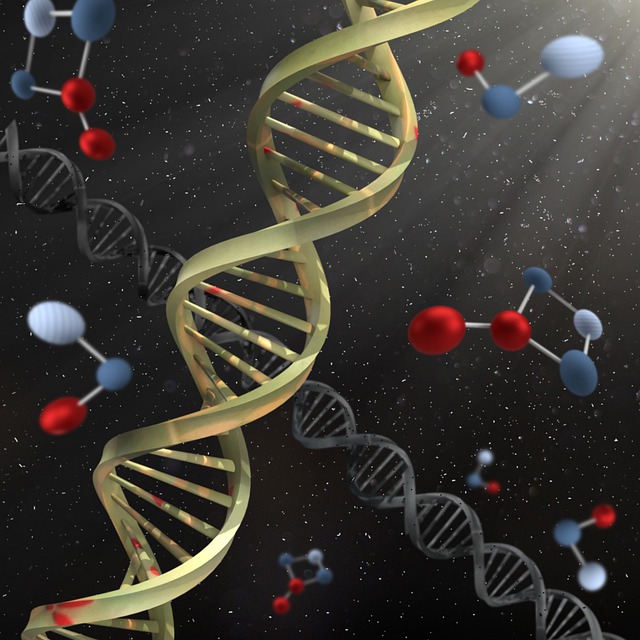The concept of epigenetics is by far one of the most important aspects of DNA biology. As you may already be aware humans have over 30,000 genes in each and every cell. Knowing which genes to turn on and off is what makes the difference between a heart cell vs. bone cell vs. brain cell, etc. Epigenetic alterations is a term used to describe DNA expression that’s not directly influenced by the gene code. This is where your behavior and your environment play a role in what genes are turned on and what genes are turned off at particular times.
So what happens? How do cells turn on and off genes? They do this by histone modifications, DNA methylation, chromatin remodeling, transcriptional alterations and through a process of reversion of epigenetic changes (1) . Okay, what does all that mean??? It basically means that our cells have several ways to regulate gene expression beyond the code that is in our DNA. If we alter one of these processes, such as with histone modifications scientist can extend life in various organisms (2). One of the most important proteins involved in this process are sirtuins which are fundamental to the process of aging.


Sirtuins are a family of proteins that have been linked to the process of aging. These proteins are able to modify proteins after they are made by using the methods described above. They can add or remove molecules that are on proteins that spool up our DNA called histones. Since DNA is soooo soooo long our cells have to wind it up on tiny spool proteins called histones to organize it in the cell. Unwinding of the DNA is regulated in part by the action of these proteins. It is mainly when the DNA is unwound from the histones that it can be read and made into RNA which then makes proteins.
Sirtuins help control the process of DNA expression and are, therefore, crucial to the life of a healthy cell. As we age the main energy source that makes sirtuins work properly declines. Sirtuins get their energy from a molecule called nictonamide adenine dinucleotide or NAD+ for short . The plus sign stands for the charged version or active form of the molecule. In order to make energy for our cells NAD+ has to quickly move electrons from one protein to the next to make things run (3). In general it does this by basically taking electrons from the food you eat in the form of hydrogen and bringing them to the mitochondria.
When NAD+ takes a hydrogen atom from your food it is then called NADH. NADH then takes the electron to the electron transport chain that is in the mitochondria which then generates adenosine triphosphate or ATP. The NADH now gets converted back to NAD+ to restart the process. Being able to reuse this molecule for such an important process is what makes all living organisms survive. Now ATP, which is one of the main energy molecules in our cells, can now be used to power numerous biological reactions, like allowing you to walk, jump and run.
NAD+, unfortunately, declines with age. By the age of 50 years old we have only half as much NAD as we had in our 20’s (4). So the next question is what can be done? Fortunately, you can boost your NAD+ levels by taking a supplement called nicotinamide mononucleotide or nicotinamide riboside. Both forms of nicotinamide work to boost your NAD+ levels and have been shown to support sirtuin activity.
NAD+ Caveat
It is important to note that NAD+ can also serve as the principle energy molecule for cancer cells. If you have a tumor or cancer or have had a tumor or cancer this supplement may not be right for you. Elevated NAD+ levels promote rapid division and survival of cancer cells (5, 6, 7). Taking supplements to increase NAD+ levels may potentially make cancer or tumors worse. Having said that, if you have never had cancer taking a senolytic supplement for several months before taking NAD+ boosters may theoretically help reduce your risk of fueling a silent tumor or cancer but more research is needed. Quercetin, which is considered a senolytic compound, has been shown to reduce prostate cancer growth (7). How long you need to take senolytics before starting nicotinamide mononucleotide is unknown.
Despite these potential risks of taking nicotinamide mononucleotide or NR it has never been shown that nicotinamide mononucleotide or NR supplements worsen cancer in humans. Furthermore, we know the younger you are the more NAD+ you have in your cells and the lower is your risk of getting cancer. On the other hand, we do know that when younger people get cancer they tend to have more aggressive forms of the disease (9, 10). One can reason that higher NAD+ levels on a whole are protective against cancer, however, when cancer develops it can worsen the course of the disease.
At this point in time we don’t have the answer to definitively say that nicotinamide mononucleotide or NR supplementation cause cancer or worsen cancer or tumor growth. We do know that proper diet, regular exercise and appropriate screening for cancers (e.g., colonoscopy and mammograms) can reduce your risk of cancers. If you decide to take nicotinamide mononucleotide be sure to add another supplement called betaine (trimethylglycine or TMG) to your regimen.
Betaine occurs naturally in beets, spinach and wheat and is an oxidation product of choline which is found in our cells. Nicotinamide mononucleotide supplementation can lead to decreases in methylation leading to an increase in homocysteine levels. Higher homocysteine levels increase your risk for heart attacks and strokes (11). Betaine supplementation lowers homocysteine levels and is considered very safe. We recommend, as always, discussing this with your family doctor before taking any supplements.

